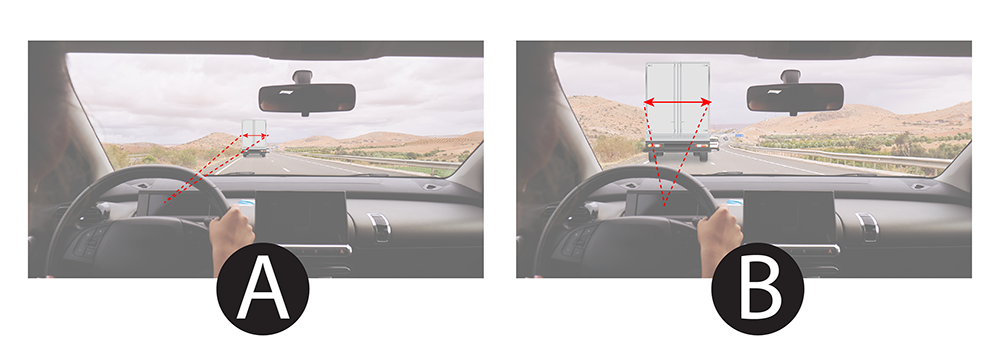In high-speed rear-end collisions involving a slow-moving or stopped vehicle in the lane of travel, a driver’s ability to perceive “looming” is often a factor.
What is Looming?
Many high-speed, rear-end collisions involve a vehicle that is stopped or moving slowly in a travel lane. In the aftermath of the accident, it is common to hear the driver of the striking vehicle say that they did not realize the lead vehicle was stopped or moving slowly until it was too late for them to avoid the collision. In these situations, the driver of the striking vehicle likely experienced a phenomenon referred to as "looming."
While drivers can easily determine that they are approaching or getting closer to a lead vehicle, it is difficult for drivers to estimate closing speed, or how quickly they are approaching the lead vehicle, until the vehicles are close together. In other words, it is difficult for them to determine that the lead vehicle is stopped or moving slowly from a long distance. In the field of human factors, the perception of the rate of closure to a lead vehicle is commonly referred to as “looming.”
Human Factors Investigations
In looming collisions, Human Factors Experts, like ESI's Dr. Nancy Grugle, are often asked to determine whether the striking driver was reasonably attentive and whether they perceived and responded to the slower moving or stopped vehicle in a reasonable amount of time. A human factors expert will:
- Calculate the point of looming detection (PLD)
- Determine the appropriate perception-reaction time (PRT)
- Analyze whether there was additional information available in the roadway environment to inform a driver that the lead vehicle was either stopped or moving slowly without perceiving looming
- Compare the driver’s actual PRT to the expected PRT for drivers in a looming collision
Point of Looming Detection
The Point of Looming Detection, PLD, is the distance from an object or vehicle at which a person is first able to detect the closing rate and understand they will strike it unless action is taken. The PLD is calculated based on three factors:
- The relative speed between the two vehicles
- The width of the lead vehicle
- The looming threshold value
Looming Threshold Value

The primary visual cue used to determine closing speed is the rate of change in image size of the lead vehicle on the retina. When drivers are far away from a lead vehicle, the image size grows very slowly and a driver is unable to perceive the rate of closure because the looming threshold has not yet been reached (Figure A). But as a driver gets closer to the lead vehicle, the image size starts to grow very rapidly and allows the driver to perceive the rapid rate of closure and the need to take evasive action to avoid a collision (i.e., the looming threshold is reached) (Figure B).
Perception-Reaction Time (PRT)
Research on perception-reaction time (PRT) in response to looming indicates that most drivers who experience looming under real-world conditions are able to respond to looming by braking within 1 second or less. This PRT value assumes that drivers are looking at the slower-moving vehicle at the instant the threshold is reached. However, a reasonably attentive driver who is scanning the roadway environment may not be looking at the slower-moving vehicle at the instant that looming becomes perceptible. Interestingly, drivers who look back at the lead vehicle after the looming threshold has been surpassed can respond in less than 0.5 seconds, on average.
Do you Need a Human Factors Expert?
Human factors experts provide unique insight and analysis in looming collisions. Trucking experts and accident reconstructionists are often retained to opine on driver actions in high-speed, rear end collision cases; however, a human factors expert addresses the fundamental capabilities and limitations of human beings to perceive and respond to that stopped or slow-moving vehicle.
For example, when the striking driver is a commercial driver, a trucking expert may analyze the striking driver’s actions based on the driver’s training and experience. An accident reconstructionist may analyze the striking driver’s actions based simply on visibility to the lead vehicle and the “rules of the road.” However, from a human factors perspective, drivers cannot reasonably be expected to respond to a slow-moving or stopped vehicle until they are actually capable of perceiving that the lead vehicle is moving slowly or stopped (e.g., perceiving looming). Therefore, it is critical to evaluate the striking driver’s actions from a human factors perspective in these types of collisions.
Do you have a case involving a high-speed, rear-end collision involving a slow-moving or stopped vehicle in the lane of travel? Contact ESI’s Dr. Nancy Grugle to discuss your case.
